木星 月惑星研究会 関西支部 (最新)
ALPO-Japan Latest
Jupiter Image 2002/01/12(UT)
伊藤紀幸,永長英夫,風本明,池村俊彦,奥田耕司,安達 誠
Maurizio Di Sciullo,Carlos E. Hernandez,
N.Ito,H.Einaga,A.Kazemoto,T.Ikemura,K.Okuda,M.Adachi
M.D.Sciullo,Carlos E
|
Noriyuki Ito (600mm Cassegrain, Digital Video SONY DCR-TRV20)
|
|
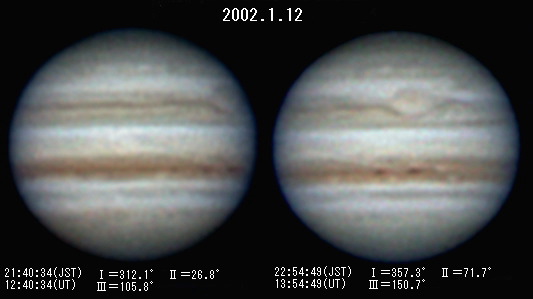
コメント
ようやく2002年初の観測です。シーイングは不安定でしたが時折
多少見られる時間帯もありました。永続白斑BA(2系97度)先端と
大赤斑(GRS2系78度)後端の経度がほぼ同じくなりました。
STrZのStreakはGRS前方に100度以上のびているようですがGRSすぐ
前方の部分は淡くなっています。STrZの暗斑はStreakと重なって
はっきりとはわかないが31度前後にあるようです。
NEBにBarge(47,63,78度)とNotch(39,69,101度)が確認できます。
78度のBargeは2週間前に比べて5度前進しており,前方のものとの
距離を縮めてきています。
このBargeについては伊賀さんと同意見で,NEB140度付近にある
白斑からのびるリフトにあたかも押されるように前方に移動して
いるようです。再び前方のBargeとの合体が見られるでしょうか。
新潟県立自然科学館 60cm カセグレン式反射望遠鏡 K-40mm拡大撮影
各12枚コンポジット SONY デジタルビデオカメラ DCR-TRV20にて撮影
≪新潟県 伊藤紀幸≫
|
Hideo Einaga (250mm Newton, Digital Still Camera NEC PICONA)
|
|
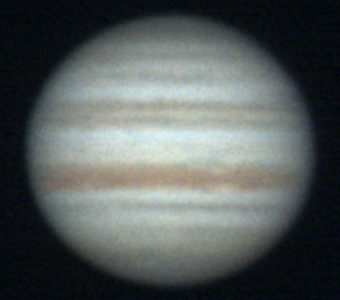
2002/01/12 09:48:01 (UT)
CMI = 206.9, CMII = 282.5, CMIII = 1.5
De = +2.0, E.Dia = 46.75"
4 frames composite
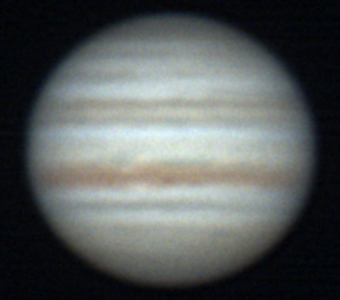
2002/01/12 10:48:39 (UT)
CMI = 243.8, CMII = 319.1, CMIII = 38.1
De = +2.0, E.Dia = 46.75"
6 frames composite
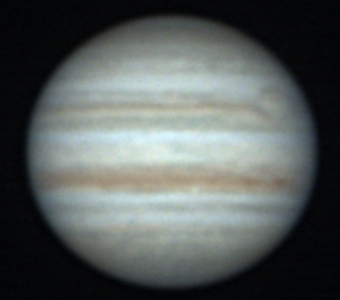
2002/01/12 12:44:47 (UT)
CMI = 314.6, CMII = 29.3, CMIII = 108.4
De = +2.0, E.Dia = 46.74"
8 frames composite
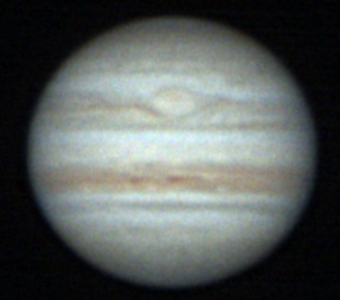
2002/01/12 14:04:54 (UT)
CMI = 3.5, CMII = 77.8, CMIII = 156.8
De = +2.0, E.Dia = 46.74"
single frame image

2002/01/12 14:25:03 (UT)
CMI = 15.8, CMII = 89.9, CMIII = 169.0
De = +2.0, E.Dia = 46.74"
6 frames composite
共通デ−タ
Seeing=3/10,Trans=2/5
25cm+barlow3x(F=34)+Picona(1/7s)
・悪シ−イングで、悪戦苦闘。なんとかGRS付近を撮影
できました。(大変疲れました。)
・GRSdarkstreakがGRSを離れています。
≪兵庫・加西 永長英夫≫
|
Akira Kazemoto(203mm Newton, Digital still camera NEC PICONA)
|
|
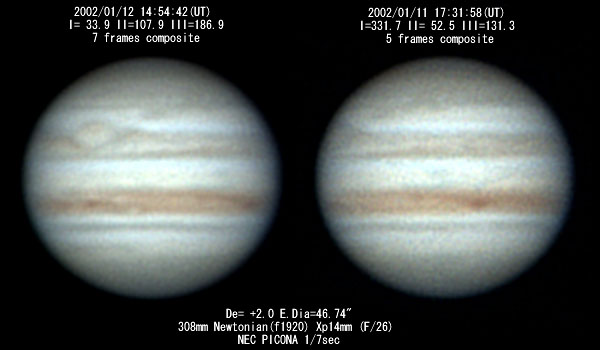
Seeing 5/10-3/10
Trans 4/5
時間の経過と共に
シーイングが悪化。
≪京都府久世郡 風本明≫
|
Toshihiko Ikemura (310mm Newton, Digital still camera NEC PICONA)
|
|
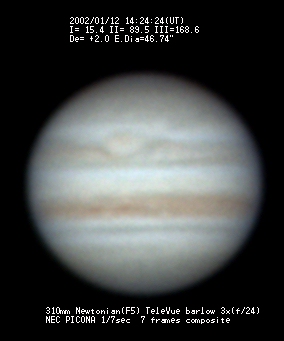
恒星はそんなにまたたいてはいないのに、
めちゃめちゃにひどいシーイングでした。
≪愛知県名古屋市 池村俊彦≫
|
奥田耕司 Koji Okuda (250mm Newton, BITRAN BT-01 Cooled CCD Camera)
|
|

:GRS右上にBAが迫ってきている
シーイングが悪く眼視ではBAの存在は分からない
≪滋賀県信楽町 奥田耕司≫
|
Makoto Adachi (Drawing: 310mm Newtonian)
|
|

------------------------------------------------------------
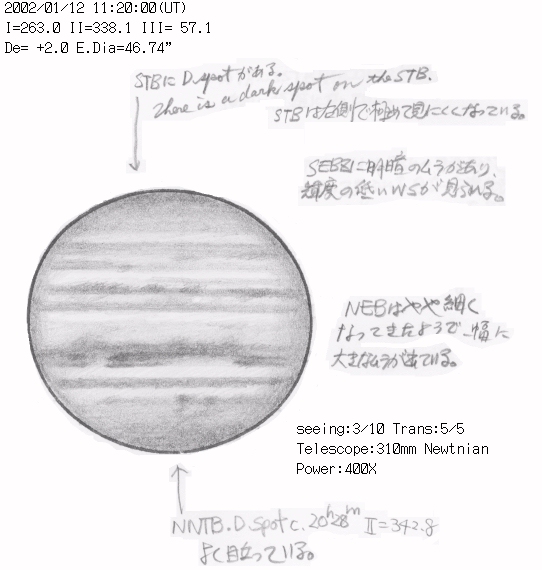
------------------------------------------------------------
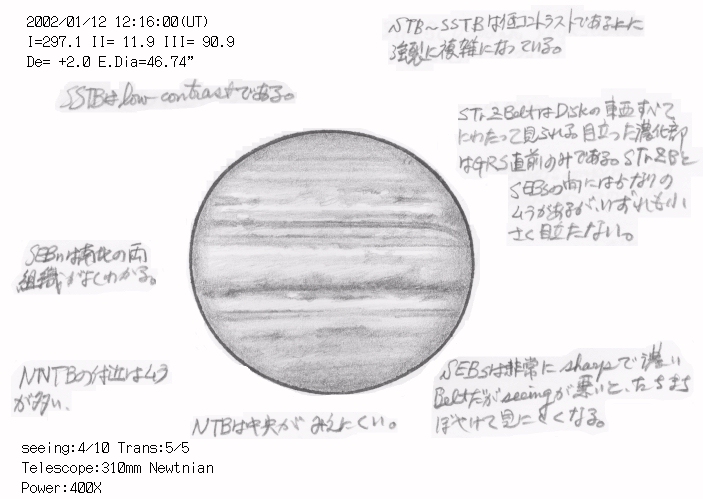
------------------------------------------------------------
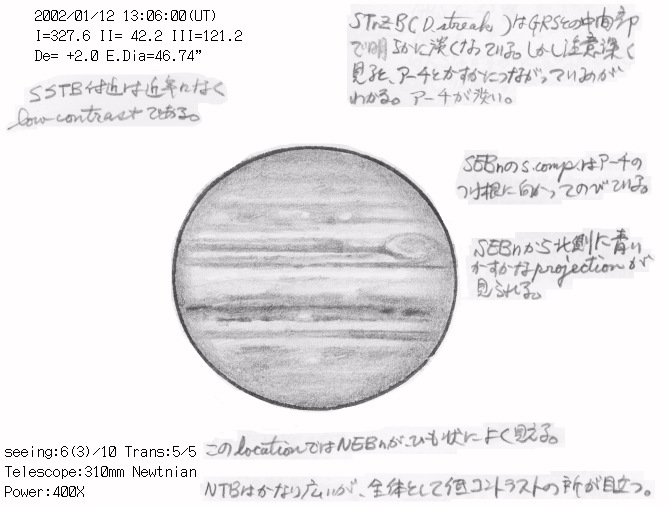
------------------------------------------------------------
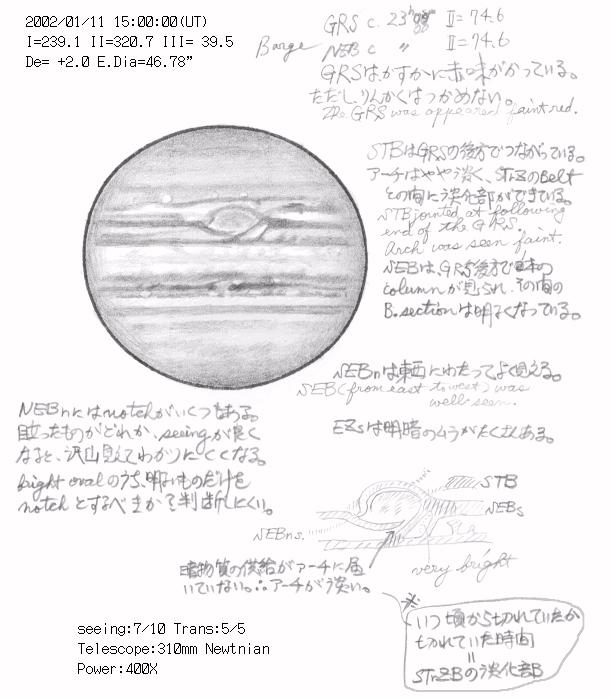
≪滋賀県 大津市 安達 誠≫
|
Maurizio Di Sciullo(250mm Excelsior Optics Newtonian . Experimental CCD Camera.)
|
 |
Gentlemen,
Here is Jupiter from two nights ago.
Seeing was excellent, but high-flying cirrus caused my exposure times to be tripled, with the resulting chaos to color balance, resolution, and contrast.
I think I see two ovals very severely stacked up just SW of the GRS - am I seeing things?
Best,
Maurizio
[ Maurizio Di Sciullo Coconut Creak Florida USA ]
|
|
Carlos E. Hernandez (Drawing:200mm F/8.7 Klevtzov-Cassegrain)
|
|
2002/01/12 03:45-04:45(UT)
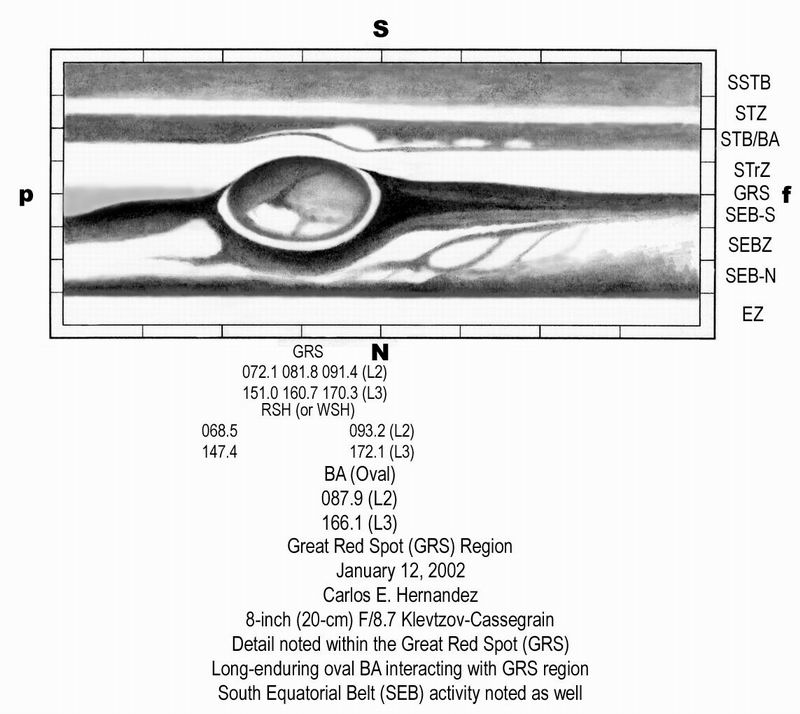
2002/01/12 03:45-04:45(UT)
CM: 063.0-099.3 (L2), 142.0-178.2 (L3)
Instrument: 8-inch (20-cm) F/8.7 Klevtzov-Cassegrain
Magnification: 252x, 368x
Filters (Wratten): 23A, 38A, 64
Seeing (1-10): 7-8 (moments of 9), Antoniadi (I-V): II
Transparency (1-6): 5 (high cirrus clouds present)
Transit Observations:
03:54 U.T. 068.5 L2, 147.7 L3, WP Red (or White) Spot Hollow (RSH, or WSH)
04:00 U.T. 072.1 L2, 151.0 L3, DP Great Red Spot (GRS)
04:16 U.T. 081.8 L2, 160.7 L3, DC GRS (center of GRS)
04:16 U.T. 081.8 L2, 160.7 L3, DC Barge NEB-N
04:32 U.T. 091.4 L2, 170.3 L3, DF GRS
14:35 U.T. 093.2 L2, 172.1 L3, WF RSH (or WSH)
An observation of the Great Red Spot (GRS) region made on January 12, 2002.
Detail was noted within the GRS (center timed at 081.8 (L2, 160.7 (L3)) as
it's southern half was noted to be dark to dusky (3-4/10) compared to the
northern half which was bright (7/10, possibly indicating the presence of
high-elevation ammonia clouds circulating within the GRS). The long-enduring
oval BA (center at 087.9 (L2, or 166.1 (L3)) is visible south-following (Sf)
the GRS within the South Temperate Belt (STB, 3/10) and a thin, bright
(7/10) projection is noted to extend to the east (preceding) below (south) a
depression within the bright (7/10) South Tropical Zone (STrZ). Smaller
ovals (7/10) are noted within the STB following BA possibly representing
remnants of the larger oval (BA). A thin, dark (3/10) strip is noted
preceding the GRS within the southern component of the South Equatorial Belt
(SEB-S) which appears to interact with the preceding border of the GRS. The
South Equatorial Belt Zone (SEBZ) appears bright (7/10) and expanded
preceding the GRS. The Red Spot Hollow (RSH, or White Spot Hollow (WSH),
7/10) appears to be encircled by a dark (3/10) border. A dark (2.5/10)
projection (or strip?) is noted to extend over the SEB-S following the GRS.
The SEB-S following the GRS appears to interact with the GRS at it's
preceding end. Multiple bright to very bright (7-8/10) ovals are noted
within the SEBZ following the GRS. The northern component of the South
Equatorial Belt (SEB-N) appears thin and dark (3/10). The South Temperate
Zone STZ) appears bright (7/10). The South South Temperate Belt (SSTB)
appears dark (3/10).
The best of luck to everyone and may you all have clear and steady skies.
Respectfully,
Carlos E. Hernandez
[[South Florida U.S.A Carlos E. Hernandez]]
 ALPO-Japan Latest
ALPO-Japan Latest  Jupiter Section
Jupiter Section

















 ALPO-Japan Latest
ALPO-Japan Latest  Jupiter Section
Jupiter Section